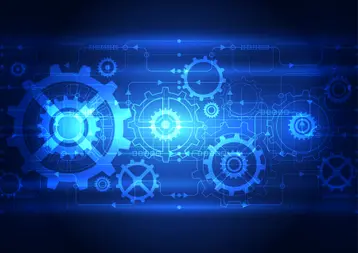
Table of contents
- 1.HR Platform to Applicant Tracking System Integration
- 2.HR Platform to Learning Management and Performance Management System Integration
- 3.HR Platform Integration with Dashboard and Analytics Providers
- 4.HR Platform Integration for Multinational Employers
- 5.HR Platform Integration with Time & Attendance Systems
- 6.HR Platform Integration with General Ledger (GL) Accounting Systems
- 7.Key Takeaway
A typical HR ecosystem consisting of a comprehensive HR platform and core HR tools helps small and medium size businesses (SMBs) perform everyday HR tasks including but not limited to managing payroll, providing access to benefits and providing HR expertise. These SMBs also may purchase a number of point solutions that solve specific HR needs.
A typical HR ecosystem consists of the following core processes, services and systems:
- Comprehensive HR platform at the core for access to benefits, payroll processing, HRIS & compliance guidance
- Applicant tracking to manage recruiting of new employees
- Learning management to help employees with their training needs
- Performance management to set goals and track employee performance
- Consolidated operational dashboards to pull information from different HR and non-HR application
- Time & attendance to manage non-exempt employees
- Finance applications to reconcile payroll cost with general ledger

In some cases, companies that have employees globally also leverage global HRIS solutions to manage their workforce.
Typically, the HR platform allows businesses to onboard new employees, manage their ongoing employee information, and terminate employees and process payroll, among other features. Each year, an employer selects benefits to provide to their employees. Their employees go through the open enrollment process to elect benefits that work best for themselves and their families.
HR Platform to Applicant Tracking System Integration
Applicant Tracking Systems (ATS) help companies manage the hiring process — from sourcing candidates to delivering offer letters. These systems also allow candidates to complete their applications and submit their resumes. During the application, interview and job offer process, many profile attributes of the candidate are captured and stored in the ATS. Most of these profile and job attributes are also required to be entered during a company’s employee onboarding process. If the ATS and the HR platform are not integrated, the same information will have to be manually entered in 2 different systems and this process could be riddled with errors and take up invaluable time and resources.

HR Platform to Learning Management and Performance Management System Integration
Learning Management Systems (LMS) help companies with compliance by enabling access to required training such as sexual harassment prevention training for their employees and managers. LMS systems also provide access to on-demand premium career building content that their employees can take advantage of.
Ever evolving Performance Management Systems may also allow companies to set goals and track their employee performance.
For HR platform integration to LMS or Performance Management Systems, often what is needed is company’s employee profile information (name, email address, employee’s department and supervisor). Any time the company hires a new employee or the employee’s profile is updated or they are terminated, data from the HR platform should be automatically synced to the LMS or Performance Management Systems to avoid manual maintenance of data in multiple systems.

HR Platform Integration with Dashboard and Analytics Providers
Many point solutions now specialize in a consolidated dashboard and reporting with data from multiple systems. These dashboard providers pull data out of HR platforms and non-HR systems to generate one dashboard that helps companies track and manage their key operational metrics in one place. Some of the most common HR dashboards include the following metrics on a company’s employees:
- Attrition metrics
- Hiring metrics
- Benefit funding
- Contributions towards retirement savings
- Compensation breakdown by base, bonus and stock grants
The dashboard providers also support slicing and dicing of data on multiple dimensions such as departments and locations.
The data attributes that are extracted from the HR platform depends on the metrics and dimensions supported by the dashboarding application. For example, for attrition and hiring metrics, a company's employee count is important whereas for employer benefits and retirement savings, benefit data stored within the HR platform is critical. If the provider supports slicing and dicing of data by department, for example, then the data extracted from the HR platform should include department information.
HR Platform Integration for Multinational Employers
Multinational employers often manage their employee information centrally so managers can get visibility into their employees globally within an org chart and also for global reporting purposes. The systems that allow for management of global employee information should be integrated to the HR platform to avoid duplicate data entry in multiple systems.
HR Platform Integration with Time & Attendance Systems
Time & attendance systems allow non-exempt employees to clock in and out of their jobs. In order for these systems to enable this process, a company’s non-exempt employee information should be synchronized with the HR platform to avoid manual setup of employee data in 2 systems.
At the end of each pay cycle, a company’s non-exempt employees should be paid accurately based on the approved hours they have worked during that cycle and as provided to the HR platform by the time & attendance system. The approved regular hours, overtime hours, PTO hours and other compensable hours maintained in the time & attendance system should be integrated and transferred to the HR platform where the payroll for all company employees are processed according to data provided from that system.

HR Platform Integration with General Ledger (GL) Accounting Systems
Payroll expenses are typically one of the highest expenses for any company, so this information is typically reconciled with GL accounting systems. The cost for payroll is typically allocated at the department and location level. When the HR platform is integrated to the GL accounting system after the payroll is processed at the end of each pay cycle, the payroll cost is reconciled automatically with the accounting system, eliminating the need for manual reconciliation.
Key Takeaway
The HR ecosystem is continuously evolving, so companies derive the maximum value from the point systems within the ecosystem if the systems talk to each other. The integration scenarios described above provide insight into different use cases.
For more information on understanding different options and modes of integration, read here.
To learn more about TriNet technology platform visit us here.
This communication is for informational purposes only; it is not legal, tax or accounting advice; and is not an offer to sell, buy or procure insurance.
This post may contain hyperlinks to websites operated by parties other than TriNet. Such hyperlinks are provided for reference only. TriNet does not control such web sites and is not responsible for their content. Inclusion of such hyperlinks on TriNet.com does not necessarily imply any endorsement of the material on such websites or association with their operators.

Ganesh Sundaresan
Table of contents
- 1.HR Platform to Applicant Tracking System Integration
- 2.HR Platform to Learning Management and Performance Management System Integration
- 3.HR Platform Integration with Dashboard and Analytics Providers
- 4.HR Platform Integration for Multinational Employers
- 5.HR Platform Integration with Time & Attendance Systems
- 6.HR Platform Integration with General Ledger (GL) Accounting Systems
- 7.Key Takeaway





